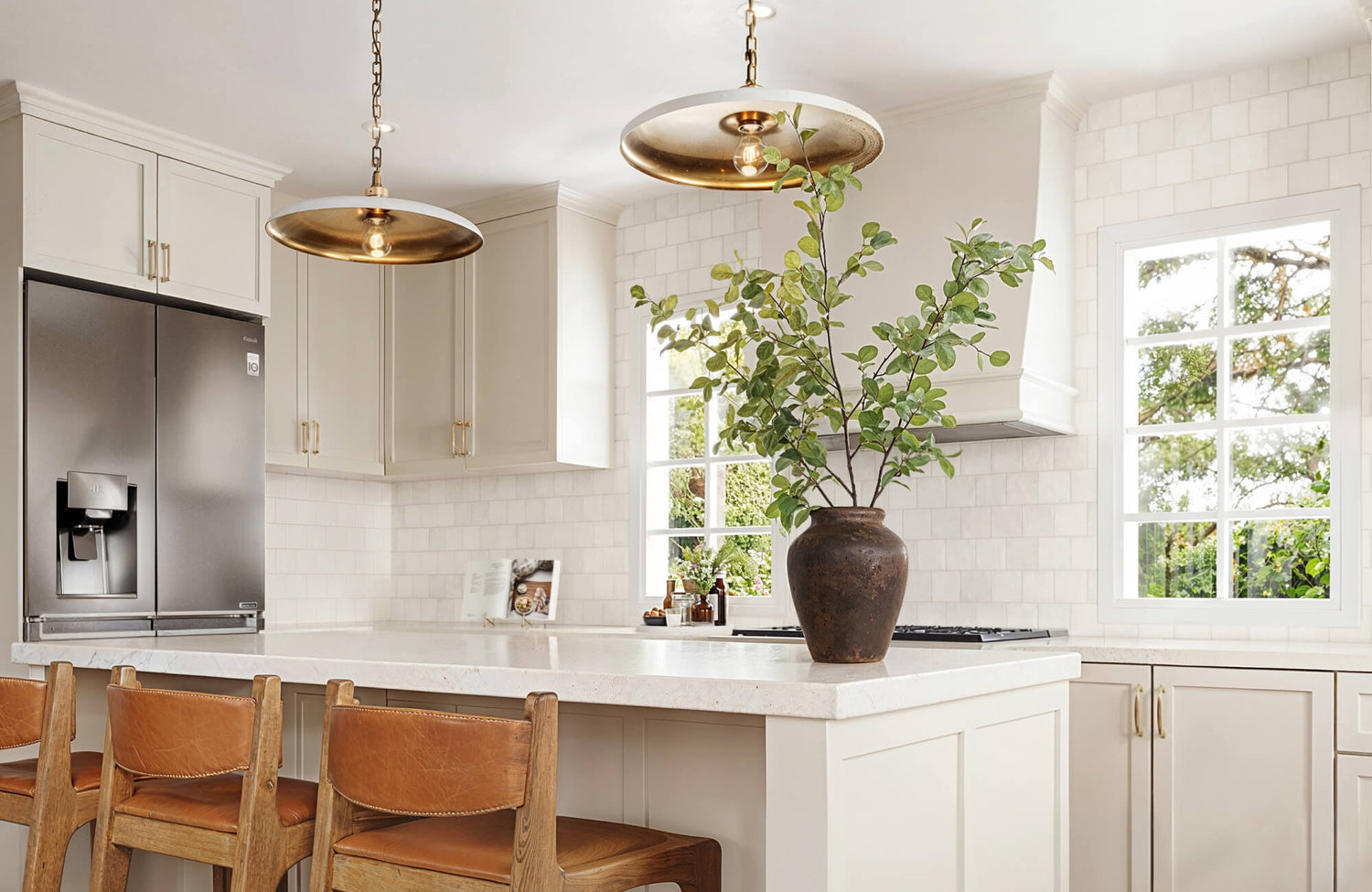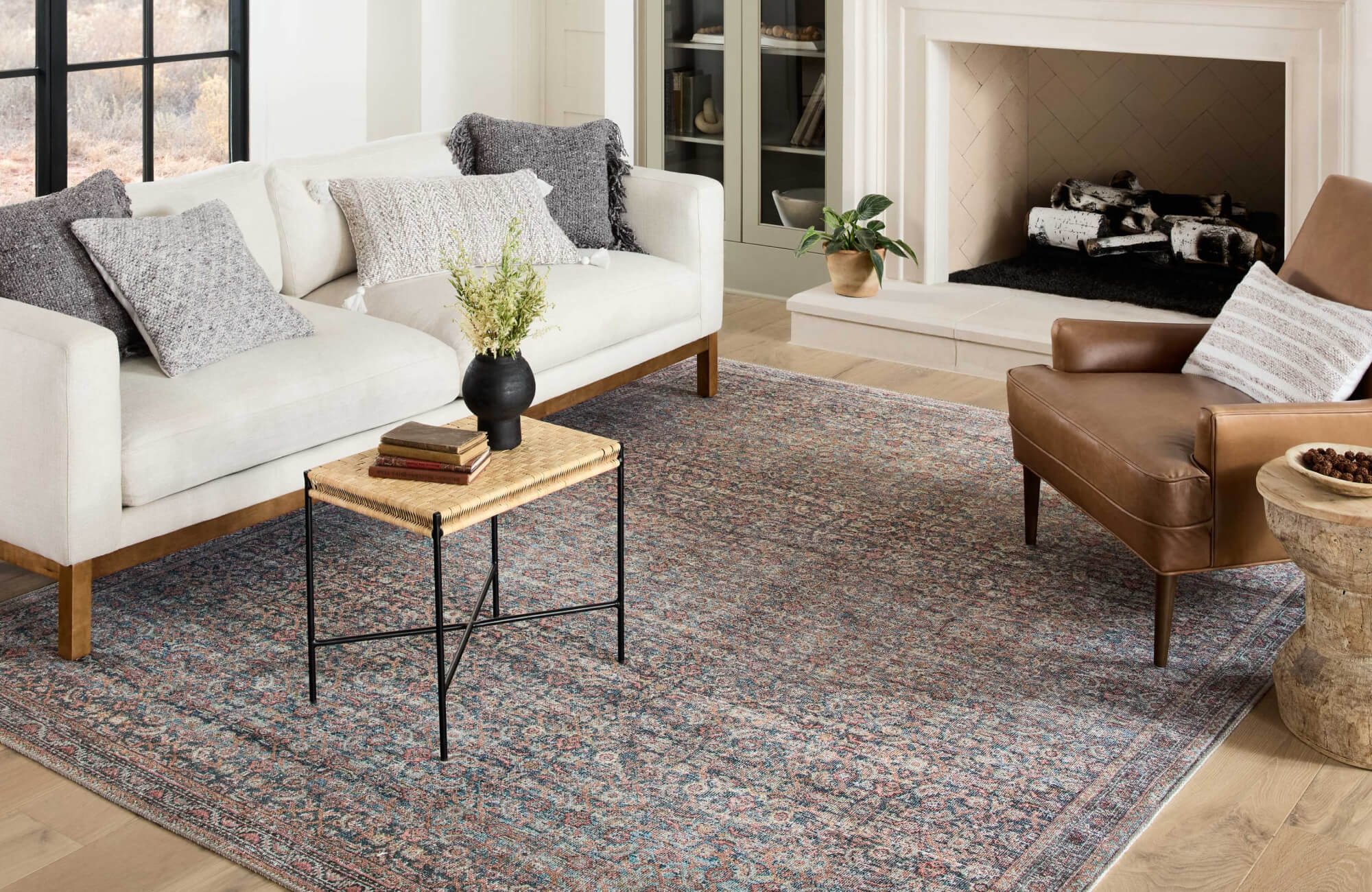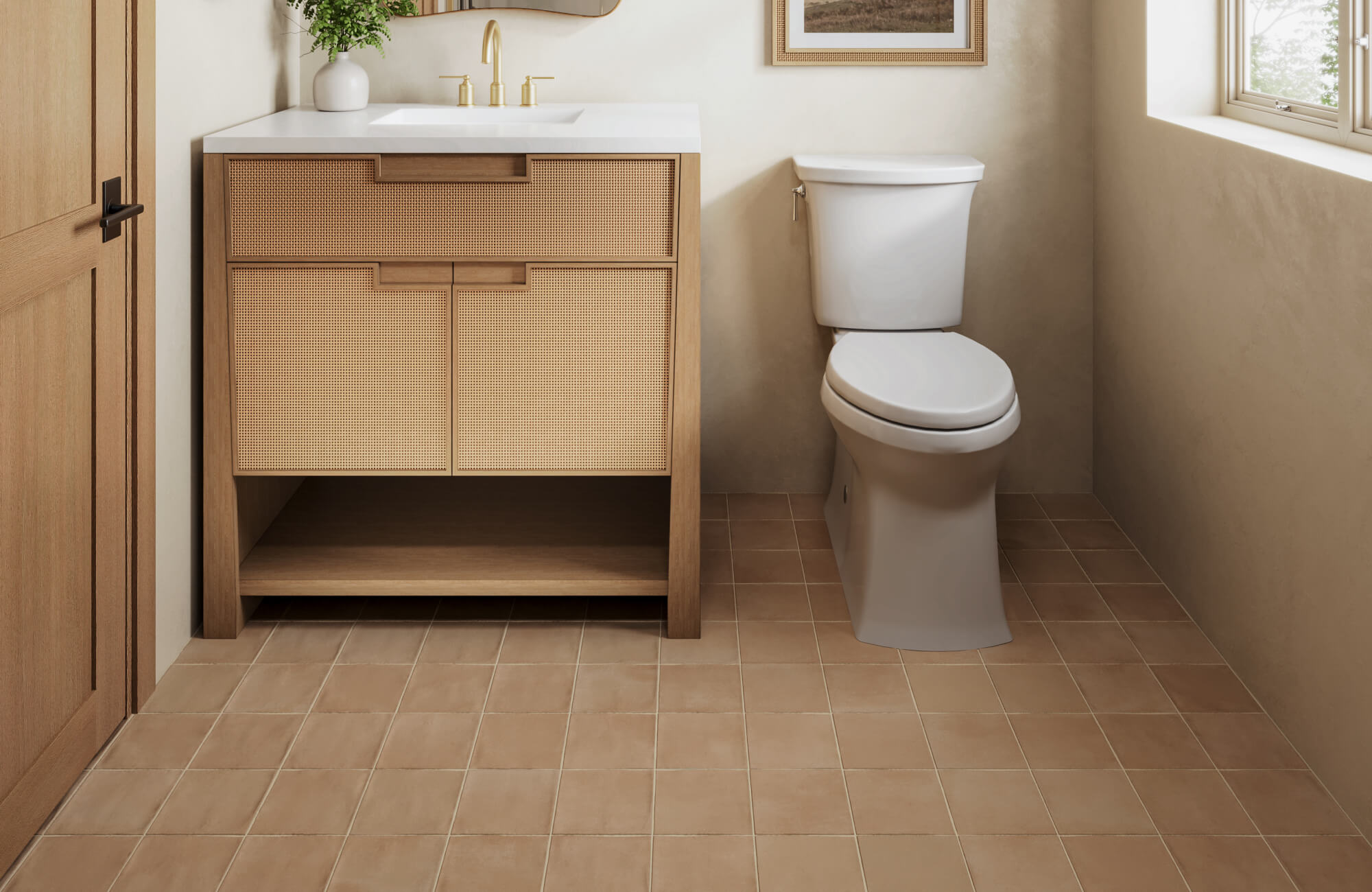The kitchen is a central space in the home where both function and style matter. While not everyone can make major structural changes, small design updates can still have a big impact. One such detail is the kitchen backsplash. Often seen as just a protective layer, the backsplash also plays a key role in how large and open the kitchen feels.
In homes where space is limited, smart design choices become essential. The right backsplash can help make a kitchen look brighter, more open, and less cluttered. This article explores how materials, colors, and layout choices for backsplashes can visually expand your kitchen, offering practical ideas to create a more spacious feel without a full renovation.
Strategic Backsplash Selection
Designing a kitchen to feel larger starts with understanding how perception works. The interplay of light, color, and surface continuity is essential in making small spaces feel open. Your backsplash can serve as a critical visual tool in amplifying brightness and eliminating boundaries.
Enhancing Brightness Through Reflectivity
Light is one of the most effective tools for making a kitchen feel more open, and the backsplash can be a valuable tool for reflecting that light. Lighter-colored backsplashes, particularly those with a glossy finish, help distribute light throughout the room. Options like white subway tiles, soft gray ceramics, or creamy tones naturally brighten the space by reflecting both daylight and artificial lighting. An excellent example is the Maisie 4x4 Glossy Ceramic Tile in Canvas from Edward Martin, as seen in the photo above, with its soft, neutral tone and smooth glossy surface bounce light around the room, enhancing brightness while blending seamlessly with a variety of color palettes.
Additionally, glass backsplashes, whether solid panels or individual tiles, are exceptional in this regard due to their inherent reflectivity, which scatters light and illuminates even the darkest corners. This interplay of light not only brightens the space but also dissolves harsh shadows, which can make a room feel more confined. The way your kitchen's existing lighting, from pendant lights to under-cabinet strips, interacts with these reflective surfaces further amplifies this expansive effect, creating a luminous and open atmosphere.
Creating Continuity with Seamless Surfaces
The more visual breaks in a space, the smaller it feels. Interruptions like dark grout lines or contrasting patterns can disrupt flow and limit the perceived size of a room. To counteract this, choose backsplash materials that promote visual continuity. Large format tiles significantly reduce grout lines, offering a smooth, expansive surface that feels uninterrupted. For instance, the Giselle 24x24 Polished Porcelain Tile in Shell, whose creamy, polished finish and generous size help walls appear sleek and seamless, especially in kitchens aiming for a clean, modern look.
When paired with matching grout, this tile virtually eliminates breaks in the surface, allowing the light to glide across uninterrupted. For added visual impact, consider running the backsplash to the ceiling or using slab-style installations to enhance vertical dimension. These strategies collectively amplify space and lend an air of refined sophistication.
Adding Depth with Subtle Texture
While smooth surfaces keep the look clean, subtle texture can add dimension without overwhelming the space. The key is to keep textures gentle and understated. Heavy textures may cast shadows that make the room appear smaller, so it's best to choose tiles with slight surface variations or a soft tactile finish that subtly interacts with light.
The finish also plays a role. Glossy tiles reflect more light and help brighten the kitchen, enhancing the sense of openness. In contrast, matte finishes absorb more light but can add quiet sophistication. However, a mix of both, such as a glossy field tile accented with a few matte pieces, can introduce depth and variation while maintaining an airy atmosphere. The way light shifts across different sheens adds quiet detail, helping the space feel layered and visually engaging without feeling cluttered.
Material Matters
Beyond visual strategies, the materials used for your backsplash directly impact how open the space feels. Reflectivity, size compatibility, and integration with other surfaces are all material-dependent qualities that affect spatial perception.
Glass Backsplashes
Glass backsplashes are highly effective in opening up tight kitchens. Their reflective nature bounces light across the room, brightening the space and enhancing the perception of depth. Whether using clear, frosted, mirrored, or painted glass, the seamless quality of a glass panel can make walls appear to recede into the distance. Mirrored versions, in particular, can visually double the room’s depth while also serving as a bold design feature. In addition to their visual impact, glass backsplashes are easy to maintain, staying clear and glossy with minimal cleaning, ensuring their light-enhancing effect lasts over time.
One drawback, however, is that glass can show smudges, fingerprints, and splashes more readily than some other materials. This means it may require more frequent wiping in high-use areas to maintain its pristine appearance. Despite this, its ability to amplify light and add modern elegance makes glass a standout option for visually expanding a kitchen.
Tile Selection
Tile remains a top choice for backsplashes thanks to its adaptability in both function and style. When the goal is to make a kitchen feel more open, both the size and finish of the tile matter. Large-format tiles with rectified edges are especially effective—they reduce grout lines, minimize visual interruptions, and create a more unified surface that helps the eye move freely across the wall. This contributes to a smoother, more expansive feel in the room.
Glossy ceramic and porcelain tiles further enhance this effect by reflecting light, which adds brightness and dissolves visual boundaries. Light tones like white, soft gray, or muted pastels not only brighten the space but also visually recede, making the walls feel farther away. The Miley 4.5x9.1 Glossy Porcelain Tile in Frost, as shown in the photo above, is a beautiful example—it brings a cool, airy elegance with a subtle sheen that bounces light gracefully throughout the kitchen, expanding the sense of space while keeping the design soft and cohesive.
Whether you’re going for a minimalist look or adding subtle texture, thoughtful tile selection can play a major role in improving both spatial flow and overall ambiance. To help visualize your choices in real time, Edward Martin’s augmented reality (AR) tool lets you preview how specific tiles will look in your actual space—ensuring that every decision supports your design goals before you commit. When paired with complementary lighting and minimal contrast grout, the result is a cohesive, luminous kitchen that feels more open and inviting.
Natural Stone
Natural stone offers rich texture and timeless style, but its finish and color make all the difference in helping a kitchen feel more spacious. Polished surfaces like marble or quartz with soft veining reflect light well, helping to brighten the room while adding subtle elegance. Honed finishes offer a more matte appearance but still work beautifully in lighter shades such as cream or soft beige, maintaining a soft and open atmosphere. The natural variation in stone patterns adds gentle movement and depth, creating visual interest without overwhelming the space. When chosen thoughtfully, stone backsplashes bring warmth and dimension while supporting a light, airy kitchen design.
Painted and Papered Alternatives
If you're aiming for a clean, open feel in the kitchen, sometimes skipping traditional backsplash materials can be surprisingly effective. In areas like behind the sink or range, washable paint in light, airy tones can create a minimalist look that blends seamlessly with surrounding walls. This uninterrupted surface reduces visual clutter and makes the space feel larger.
Another creative option is subtle, patterned wallpaper that complements rather than competes with the room. Chosen carefully, it can extend the visual line of the wall and contribute to a cohesive, streamlined design. These non-traditional choices are ideal for minimalist or modern spaces where simplicity enhances the sense of openness.
However, it's worth noting that both paint and wallpaper may lack the durability and moisture resistance of tile or glass, especially in areas exposed to heavy splashes or heat, which may require more frequent maintenance or touch-ups.

Design Dynamics
Choosing the right backsplash material is only part of the equation. How you install and incorporate it into your kitchen design plays a major role in shaping how open or closed the space feels. Placement, pattern, and detail are just as important as the material itself.
Verticality Ventures
To create the illusion of height, take advantage of vertical lines. Extending the backsplash all the way to the ceiling naturally draws the eye upward, making the room feel taller and more open. This visual lift is even more pronounced when using light-toned, reflective materials that brighten the wall surface.
Tiles like the Olivia 4x16 Glossy Ceramic Tile in Dove, as depicted in the photo above, are especially well-suited for this approach—their elongated shape and soft gray tone bring a graceful sense of rhythm to vertical installations, subtly stretching the perception of height. When placed in a vertical stack or offset pattern, they help sculpt the room’s architecture in a refined, light-enhancing way.
For an added boost in openness, consider pairing vertical tile layouts with open shelving instead of bulky upper cabinets. This combination maintains an airy wallscape while reinforcing the vertical flow, helping your kitchen feel more expansive and thoughtfully designed.
Horizontal Horizons
Conversely, to make your kitchen feel wider, horizontal patterns can help. When backsplash tiles are laid horizontally, they encourage the eye to move side to side, visually stretching the walls. Classic subway tiles or thin, linear designs work especially well in this format. For narrow kitchens, a full-length backsplash that runs the entire counter width can create a smooth, extended line that helps the space feel more balanced and less enclosed.
Grout Games
Grout color may seem like a small detail, but it has a noticeable impact on spatial perception. High-contrast grout lines can create a grid-like effect that disrupts visual flow and makes a kitchen feel more compact. To avoid this, choose grout that closely matches your tile. This creates a smooth, continuous surface with fewer interruptions, making the wall feel larger and more unified. For tiles with rectified edges, narrow grout joints enhance this clean, seamless appearance even more. Avoid pairing dark grout with light tiles, as this tends to visually break up the wall.
Pattern Play
Patterns can also add character, but need to be used with care in smaller kitchens. Subtle designs, such as a light herringbone or simple offset layout, add texture and interest without making the space feel crowded. Keep the color palette soft and cohesive to avoid visual clutter. Large, busy patterns or dark motifs can overwhelm a backsplash, making walls feel dense and the room feel smaller. When done thoughtfully, soft patterns can add movement and elegance while keeping the space open and balanced.

Integrating Elements for Maximum Effect
A kitchen backsplash doesn’t exist in isolation. The way it interacts with cabinetry, countertops, lighting, and surrounding finishes determines its effectiveness in creating a cohesive and expansive environment.
Cabinetry Compatibility
The relationship between your cabinetry and backsplash directly affects how open the kitchen feels. To avoid a cluttered look, aim for tonal consistency. Light-colored cabinets paired with a similarly toned backsplash create a smooth visual transition that expands the sense of space. In contrast, if you have dark cabinets, a glossy or reflective backsplash can offset the weight of those tones by bouncing light around the room.
For kitchens with darker cabinets, choosing a reflective backsplash is key to balancing visual weight and preserving brightness. The Jaden 2.5x16 Glossy Ceramic Tile in Dove is an ideal option—its elongated form and soft, light-reflective finish help counterbalance the depth of dark cabinetry, subtly lightening the space while maintaining elegance. Its understated dove gray hue introduces a neutral lift without stark contrast, making it both functional and visually harmonious.
Handleless cabinets also enhance this effect by streamlining the overall look. When uninterrupted by hardware, the backsplash has a greater chance to shine—literally and figuratively—contributing to a more open and modern atmosphere.
Countertop Cohesion
A unified transition between countertop and backsplash strengthens the visual flow and helps avoid a disjointed layout. Using the same slab for both, such as quartz or marble, creates a seamless, uninterrupted surface that appears larger and more luxurious. If mixing materials, choose shades and textures that complement rather than contrast. Keeping the transition subtle maintains cohesion and avoids dividing the space into smaller visual segments.
Lighting Features
Lighting plays a key role in maximizing the backsplash’s effect. Under-cabinet lighting, for example, highlights texture, enhances color, and helps reflective surfaces do their job by distributing light more evenly. For a modern touch, integrated LED strips can create a soft, glowing backdrop that adds depth and dimension. Good lighting doesn’t just brighten the kitchen—it enhances every design detail, making the space feel larger and more polished.
Minimalist Approach
Even the best-designed backsplash loses impact in a cluttered kitchen. Keeping counters clear and minimizing visual distractions allows your backsplash to stand out. Integrated storage, built-in appliances, and intentional organization all contribute to a cleaner, more open environment. A minimalist approach supports visual flow and lets spacious design elements, like a continuous backsplash, work to their full potential.
Final Thoughts
You don’t need to remodel your entire kitchen to make it feel more spacious. With thoughtful design choices, particularly in your backsplash, you can transform how open and inviting the space appears. Light tones, reflective surfaces, and seamless materials help expand visual boundaries. When these elements are coordinated with cabinetry, countertops, and lighting, the result is a more cohesive and airy kitchen. Combine that with a clutter-free layout, and the room will feel brighter, larger, and more intentionally designed. Whether you choose sleek glass panels, elegant stone, or clean-lined tile, the key lies in the details and how they work together to enhance the heart of your home.









